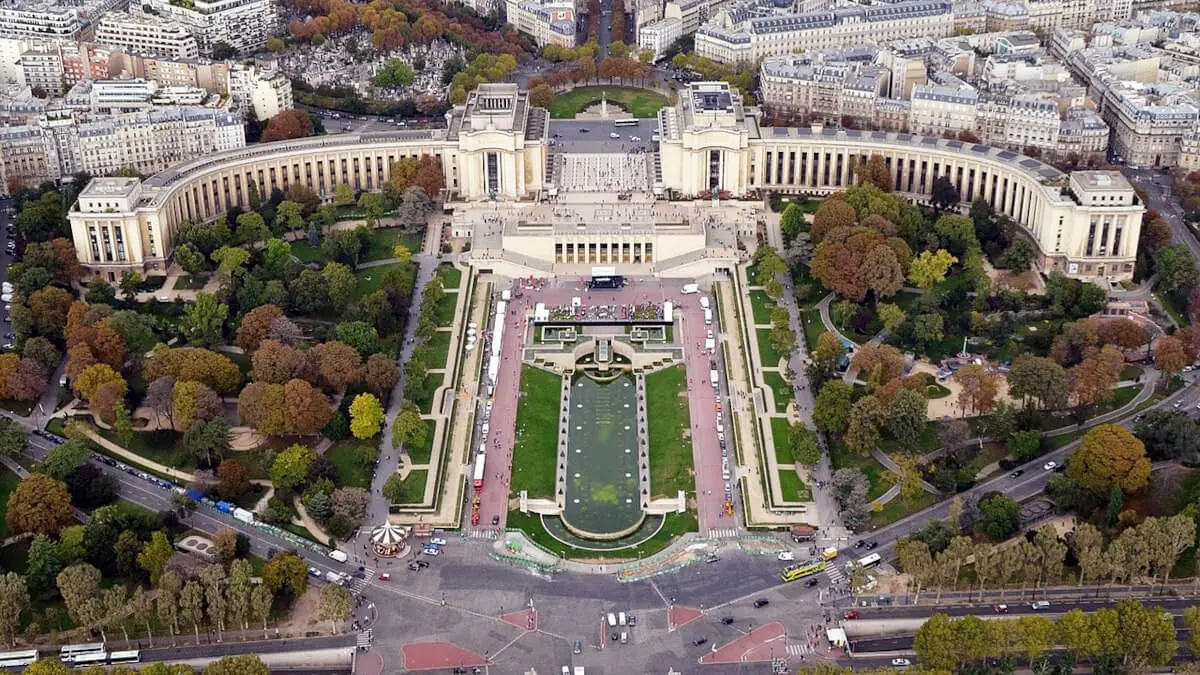Two hundred years since the last French invasion

If not the most majestic, the Trocadero Square in Paris is certainly the most grandiose, due to its size and its location in front of the immensity of the Eiffel Tower and the river Seine flowing between them. It is also certain that few of the many millions of Spaniards who visit it know both its origins and the history of what it commemorates.
Trocadero Island, four kilometres long and one kilometre wide, is located in the Bay of Cadiz, leaving between it and the mainland a tongue of water, known there as the Caño, of the same name as the island. It was the last stronghold of the Spanish liberals who, following the pronunciamiento of Lieutenant Rafael Riego in 1820, had re-established the Constitution approved by the Cortes of Cadiz in 1812, and abolished in 1814 by Ferdinand VII on his return from his exile-captivity in France.
The invasion of Spain by Napoleon's troops and the corresponding War of Independence, in addition to the immense destruction and looting of the country, would lead to the cornering of Spain in the European concert, enshrined in the Congress of Vienna (1815) following Napoleon's defeat at Waterloo, the cascade of uprisings by Creole leaders in the Spanish viceroyalties of America, and the consequent impoverishment of the country and the withdrawal of its society into itself, giving rise to a century plagued by military pronunciamientos and three civil wars. The 19th century began badly for Spain with the naval defeat by the British at Trafalgar (1805), commemorated in another great square in London. It ended with the 1898 disaster in Santiago de Cuba and the corresponding loss of that island, Puerto Rico and the Philippines.
The final crushing of the last defenders of the freedoms and values of the 1812 Constitution finally took place on the island of Trocadero in August 1823, where the last soldiers and civilians had taken refuge, relentlessly pursued there by the French troops, 95,000 men known as the Hundred Thousand Sons of Saint Louis, under the command of the Duke of Angoulême, Louis Antoine d'Artois, first-born son of Charles X and Maria Theresa of Savoy, and the last dauphin of France. The ducal title had been conferred on him by his uncle, King Louis XVI, husband of Marie Antoinette, both of whom were deposed and guillotined by the French Revolution of Marat, Danton and Robespierre.
In addition to much bloodshed, what the Revolution abolished was absolutism, which was largely re-established with Napoleon's defeat. Spain, which had lost its great power status in Vienna, nevertheless became a danger to the rest of Europe as Riego's uprising forced Ferdinand VII to abide by constitutional liberties. "Let us all march, and I the first, along the path of the Constitution", said the felon king solemnly, who was to show his true colours when the Duke of Angoulême and his Hundred Thousand Sons had completed their mission.
The new invasion of Spain by these French troops was agreed at the Congress of Verona in 1822, which brought together representatives of the Quadruple Alliance: Russia, Austria, Prussia and the United Kingdom of Great Britain and Ireland. France succeeded in gaining a place at the top and thus recovering from the Napoleonic adventure, and it was France's proposal to send the military expedition to the battered Spain that would put an end to the liberal tendencies that were likely to spread and infect the rest of the continent.
Unlike the Napoleonic expedition, the one led by the Duke of Angoulême encountered little resistance in a country that had been exhausted after crossing the Pyrenees in April 1823. At the beginning of May it established its headquarters in Madrid and, with the help of 17,000 Spaniards sympathetic to the absolutist cause, easily conquered and occupied the country's institutions. In the military field, the French advance was rapid and unstoppable. The last rebels took refuge in Cadiz and the surrounding area. The Duke of Angoulême himself led the operations without giving the Spaniards time to catch their breath after each attack. Puerto Real, Puerto de Santa María, Chiclana, one after the other the last bastions of resistance fell. The last of these, the island of Trocadero, attempted a desperate defence under the command of the deputy and colonel José Grasés. The first confrontation, according to testimonies in the Municipal Archives of Cádiz, resulted in "five hundred French casualties and several thousand Spanish".
Besieged, the resisters exhausted their last reserves of food, despite which they still stood up to the new waves of French troops. On 29 August, according to the written testimony of Lieutenant Colonel Manuel Bayo, the pincer was closed to the point that many constitutionalists did not even have time to flee. Colonel Grasés, with 300 men and two artillery pieces, held out until the final assault at dawn on 31 August.
The Duke of Angoulême carried out his mission of re-establishing absolutism, embodied once again in Ferdinand VII and his Ominous Decade, in blood and fire. The man who was called The Desired One did not respect the promised amnesty for the revolutionaries and signed the execution of 30,000 Spaniards, after once again abolishing the Constitution of 1812.
It is now the bicentenary of that desperate deed of the Trocadero. A name of a small Spanish island for a grandiose square in Paris, and like Trafalgar in London, of not very good memory for the suffering and battered Spanish people.

